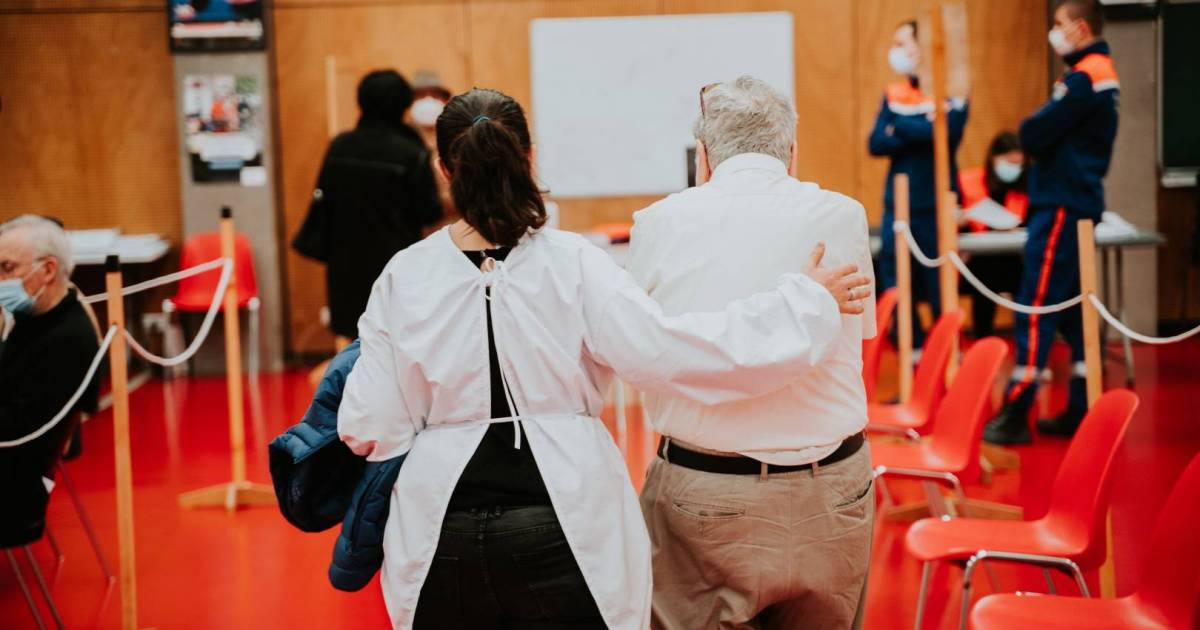The general public usually thinks of COVID-19 as a respiratory health issues that can lead to respiration difficulties.
Nonetheless, an write-up released in the journal Science on January 20 suggests that in some circumstances, it can also have devastating implications on the central nervous method.
Citing 15 scientific papers, the authors noted that “myriad neurological complications—including confusion, stroke, and neuromuscular disorders—manifest all through acute COVID-19”.
“Also, maladies these types of as impaired focus, headache, sensory disturbances, depression, and even psychosis might persist for months following infection, as component of a constellation of signs and symptoms now identified as Prolonged Covid,” wrote Yale College professor of neurology Dr. Serena Spudich and Dr. Avindra Nath, scientific director the National Institute of Neurological Illnesses and Stroke at the U.S. Nationwide Institutes of Health and fitness.
Also, the two authors stated in their post that these neuropsychiatric indicators can strike younger people.
“Many folks who practical experience neurologic symptoms that linger after acute COVID-19 are significantly less than 50 several years aged and have been healthy and active prior to an infection,” they wrote.
Spudich and Nath said that the the greater part of these youthful persons “have been never hospitalized through their acute COVID-19 sickness, reflecting delicate first ailment”.
“The pathophysiological mechanisms are not nicely understood, even though proof generally implicates immune dysfunction, together with nonspecific neuroinflammation and antineural autoimmune dysregulation,” they wrote.
“It is unsure whether unexpected neurological repercussions may possibly develop yrs immediately after preliminary infection,” they added. “With hundreds of thousands of persons affected, anxious process problems pose general public wellness troubles for rehabilitation and recovery and for disruptions in the workforce thanks to reduction of useful ability. There is an urgent require to recognize the pathophysiology of these diseases and establish illness-modifying therapies.”
Just one of the studies cited was a U.K.-extensive evaluation of hospitalized patients, published in the Lancet in 2020.
Spudich and Nath pointed out that this examine “discovered the most typical neurologic disorders as anosmia (reduction of odor), stroke, delirium, brain irritation, encephalopathy, major psychiatric syndromes, and peripheral nerve syndromes”.
Spudich and Nath also said that “the preponderance of proof from CSF [cerebrospinal fluid] and brain tissue implies that immune activation and irritation inside the CNS [central nervous system] is the major driver of neurologic disorder in acute COVID-19”.
They cited yet another paper, revealed in the Lancet Neurology in 2020, focusing on autopsy research of patients with acute COVID-19. It showed “infiltration of macrophages, CD8+ T lymphocytes in perivascular locations, and popular microglial activation through the brain”.
A 3rd review cited, which was published in Genome Medication in 2021, examined single-cell investigation of brain tissue. Spudich and Nath wrote that it “also verified CD8+ lymphocyte infiltration and microglial activation” even with no evidence of the SARS-CoV-2 RNA becoming detected in the brain parenchyma (useful tissue, these types of as neurons and glial cells, as effectively as collagen proteins).
“The robust, generalized, and SARS-CoV-2–specific immune responses noticed in the CNS [central nervous system] are puzzling in the absence of easily detectable virus and might recommend transient an infection of the mind incredibly early in infection or minimal concentrations of viral antigen in the CNS,” Spudich and Nath wrote.
Citing a 2020 research in the Journal of the American Health-related Affiliation Neurology, they pointed out that acute COVID-19 “is affiliated with heightened chance of stroke compared with influenza illness of comparable severity, even right after correcting for stroke chance components”.
“Overt cerebrovascular gatherings all through acute COVID-19 generally take place in those with vulnerabilities to vascular disorder (these kinds of as innovative age and cardiac illness),” Spudich and Nath stated.
The authors acknowledged that it’s complicated to consider techniques to dealing with Very long Covid, offered the range and breadth of indicators and the difficulties of figuring out which types could possibly be due to the SARS-CoV-2 virus as opposed to pre-present or coincidental problems.
The implications of COVID-19 on the mind had been also stated by University of Toronto researcher Colin Furness in a January 6 on the web discussion hosted by a group called Protect Our Province B.C.
“The challenge is not the sniffles,” Furness told the moderator, Dr. Brenda Hardie, at the time. “The issue is what the virus is carrying out somewhere else in the physique from the toes to the testes to the brain. It is resulting in autoimmune disease. It is resulting in reduction of mind tissue.
“We haven’t seen that in youngsters since we have not appeared,” Furness emphasized. “But we have found it in grown ups, literally—brain tissue disappearing.”
More
